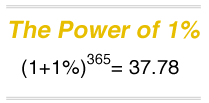“Success is not final, failure is not fatal: it is the courage to continue that counts.” – Winston Churchill
I have forgotten many things over the years: names, faces, quotes, passwords. But only once have I stood on stage with hundreds of people staring back at me and forgot how to speak. My mind blank, the hours of preparation and practice could not bring back a single word. The only word that I could think of was, failure.
Fortunately, I am well versed at failure. I have failed at everything I have ever tried – usually multiple times. I’ve failed in love and at my career. I’ve failed at friendships and in finance. My life has been a series of one failure after another, and that is a beautiful thing. Because nothing succeeds like failure.
Before the Emancipation Proclamation and long before Mount Rushmore, there was an Abraham Lincoln who tried to be a state legislator and lost. He lost in his first run for Congress and his two bids to be a U.S. Senator. Lincoln faced more than his fair share of failures, but what makes him extraordinary is he continued to get up and continued to push forward.
Michael Jordan missed 26 game winning shots. Babe Ruth struck out 1,330 times. Emmitt Smith, the all-time NFL leader in rushing, averaged getting tackled every 4.2 yards, but he got up every 4.2 yards to carry the ball again. Every failure gets you closer to success.
As long as you keep getting up, that failure provides a data point the next time you are in a similar situation.
Fail Forward
There are hundreds of examples of individuals and organizations continuing to get up until they hit on what would eventually be their big break. Formula 409 was the Rouff Corporation’s 409th attempt to make a commercial grade cleaner. Water displacement, 40th try, became WD40. Angry Birds was a breakout success making Rovio seemingly famous overnight. Angry Birds was Rovio’s 52nd game.
The quickest way to close the gap between your current reality and your dream is to embrace failure. The best way to create a breakthrough product or to launch a new idea is to accept that failure is just a natural part of the process.
ThePoint was created to improve online fundraising. It was an unmitigated disaster. They were so far in debt that the founder had to lay off his friend and partner to pay the small amount of staff required to keep the website online. Wanting a fraction of their money back, investors encouraged the team to focus on the one bright spot on ThePoint: a small widget on the side of the page called Groupon.
Burbn was an HTML5 version of Foursquare. After seeing they had little chance to break into the space, they focused on the one part of the app people were actually using: the picture sharing functionality. They dropped the foursquare features and built an iOS app rebranded as Instagram.
Odeo was a service geared around sharing short audio clips. The team saw virtually no success, but they truly believed people wanted to consume information in short chunks. They dropped the audio concept, refocused around the idea of short text updates, and renamed themselves Twitter.
The list of organizations and ideas who continued to iterate on their idea and not let failure stop them is seemingly endless. These people didn’t experience failure in a shameful or shocking way. When reality punched them in the mouth, they understood it was part of the process and did everything they could to avoid it again. Failure isn’t fun, which is why it’s such a great teacher.
Fail Like A Scientist
When a scientist runs an experiment, any number of results can happen. Some of those results are positive and some are negative, but all of them are data points. Each result is a piece of data that can ultimately lead to an answer, and that’s exactly how a scientist treats failure: as another data point.
For scientists, negative results are not indications they are bad scientists. Proving a hypothesis wrong can be nearly as beneficial as proving it right because of the information gained along the way. In the same way, failures are simply data points leading to the right answer. Failure is the toll you pay on the road to being right.
Imagine a world where Lincoln had quit after that failed Senate run. Or a world in which Henry Ford had stopped after his first, his second, his third, or even his fourth bankruptcy. And there’s always the famous Edison quote, “I have not failed. I’ve just found 10,000 ways that won’t work.”
Fail Fast
The secret serial entrepreneurs know that other people don’t is that their idea is a bad idea. They don’t know why it’s bad; they just know that it’s bad. Maybe they’re misjudging their market. Maybe they’re overrating the product’s value. Maybe they’re underestimating the amount of effort to pull it off. There are dozens of maybes. This isn’t to say to go into a situation without doing research; it’s just to realize there is a gotcha out there that due diligence will never uncover.
The only way to find this gotcha, to understand what’s wrong, is to release a product, launch your company, try your idea. Then, see how the market responds and iterate. Be relentless in your iterations. Be ruthlessly honest in your assessments. Failing fast is ok. It allows you to respond fast. Failing slow, on the other hand, is death. Listen and adjust. Tweak, add features, remove features. Keep releasing and re-releasing.
Failing fast allows you to learn fast, and it’s the only way to fail. If you fail slowly, by the time you realize you missed the mark, either you will be too tired and burned out to keep at it, or the industry will have passed you by.
You want a magic bullet, the entrepreneur version of six-minute abs? Get your idea in front of people and relentlessly iterate on that idea.
Failure is a lot like going to the dentist. It’s uncomfortable but inevitable. And it’s essential if you want to reach your goals.

















 In 2009 Alfred Lin, then COO of Zappos, sent a
In 2009 Alfred Lin, then COO of Zappos, sent a 



